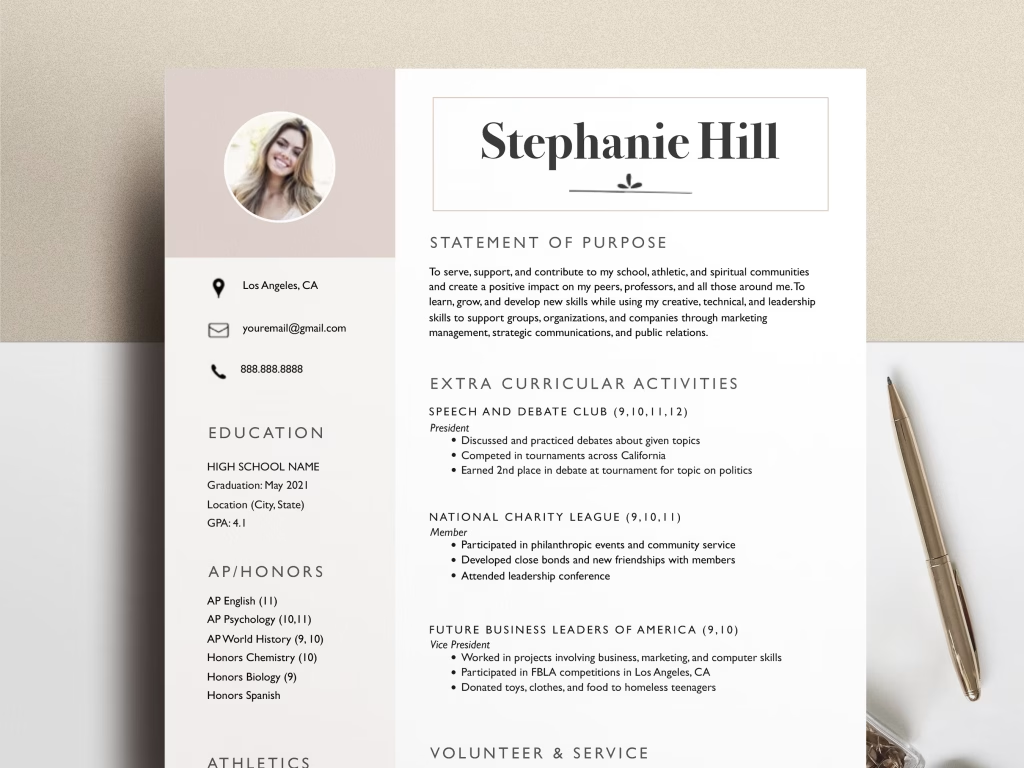Graduating from college is an exciting milestone, but stepping into the job market brings its own challenges. One of the first and most important steps is creating a professional resume that highlights your strengths. For fresh graduates, crafting a strong resume can open doors and help make the right first impression.
Employers often receive dozens or even hundreds of applications for a single role. They quickly scan resumes for key elements, making format and structure extremely important. If your resume isn’t clean, focused, and relevant, it might be overlooked regardless of your academic accomplishments.
Choosing the right format ensures that your education, skills, and experiences are presented in the most impactful way. Whether you’ve interned at a major firm or led college projects, your resume should communicate value clearly and quickly to potential employers.
Graduate Resume Format Guide
Professional Resume Timeline
The reverse chronological format is the most recognized and widely accepted layout. It highlights your latest experiences first, creating a clear career timeline. For college graduates, this format works well by emphasizing internships, part-time jobs, or volunteer roles completed during college. It also helps show growth and progression, even when experience is limited.
- Lists experiences in reverse order, starting with the most recent
- Highlights consistency and commitment across roles or activities
Functional Format for Skill-Based Roles
The functional format works best when you want to focus on your abilities rather than a timeline of job roles. This style is particularly useful for creative or technical graduates who may not have much traditional work experience but possess strong hard and soft skills. Instead of leading with job titles or dates, this format groups skills into categories such as communication, problem-solving, or software expertise. It’s ideal for those transitioning into fields where transferable skills matter more than direct experience.
Combination Format for Versatility
A combination format merges both reverse chronological and functional styles, giving you the flexibility to present a balanced snapshot. It allows you to lead with your most impressive skills or achievements and then follow up with relevant academic or professional experiences. This hybrid layout is perfect for graduates with mixed experiences, such as internships, freelance work, campus leadership, or side projects. By blending both elements, it helps build a well-rounded image that caters to various employer preferences.
Resume Parts for Graduates
Contact Information
Your contact section is the gateway for recruiters to reach out, so it must be clear, professional, and easy to find. Placed right at the top of your resume, this section should reflect accuracy and professionalism without any clutter or outdated details.
- Use a professional email address (avoid nicknames or casual handles)
- Include your LinkedIn profile and personal portfolio link
Professional Summary
Instead of an objective, a professional summary helps explain who you are and what you bring to the table. Use two to three concise lines to describe your educational background, primary skills, and the type of role you’re seeking. This gives employers immediate insight into your qualifications and potential fit.
Education Section
For recent graduates, the education section is one of the most important areas. Include your degree, university name, major, and graduation year. You may also add honors, GPA, scholarships, or major academic projects. If you’ve taken specific courses related to your field, include a few that highlight relevant knowledge.
Showcase Experience Without Jobs
Internships and Practicums

Internships provide valuable hands-on exposure that bridges classroom learning with real-world application. For college graduates with limited full-time experience, internships often serve as the most relevant and impressive items on a resume. They reflect your initiative, adaptability, and readiness for professional environments.
- Contributed to real-time projects using tools such as Excel, Trello, or Google Workspace
- Collaborated with cross-functional teams to meet deadlines and deliver outcomes
Read More: Professional Resume Strategies and Templates
Academic and Personal Projects
Capstone projects, group assignments, or individual research papers can reflect your ability to manage time, think critically, and apply theoretical concepts. If a project involved collaboration, presentation, or tech tools, mention those aspects. This proves your capacity to function in work-like settings.
Leadership and Volunteer Roles
Leadership experience from student organizations, clubs, or community service also adds weight to your resume. Roles such as class representative, team lead in group tasks, or organizer of an event show responsibility and initiative. Highlight tasks that demonstrate organization, planning, and communication.
Essential Skills for Graduates
Technical and Digital Tools
In today’s job market, employers value digital literacy. Include tools you’ve mastered such as Microsoft Office, Canva, QuickBooks, or Adobe Creative Suite. If you’re entering tech fields, list programming languages or development tools you know.
Examples of technical tools to include:
- Microsoft Excel and Word
- Google Workspace (Docs, Sheets)
- Adobe Photoshop or Illustrator
- Programming languages like Python or Java
Essential Soft Skills
Soft skills are often just as important as technical skills. Highlight attributes like time management, leadership, collaboration, and communication. These qualities show that you can thrive in diverse work environments and contribute positively to teams.
Short Courses and Certifications
Certifications from online platforms or workshops can demonstrate self-initiative. Platforms like Coursera, edX, or LinkedIn Learning offer valuable short courses. Be sure to include only those that are relevant to your field or job target. Adding dates of completion shows they are current and relevant.
Enhance Resume Effectiveness
Customize for Each Job Role
Avoid sending out the same resume for every application. Instead, tailor it to reflect the keywords and skills mentioned in each job description. Highlight achievements or coursework that matches the specific role you’re pursuing.
Use Clear Action Words
To make your resume more dynamic and persuasive, begin each job or project description with a strong action verb. These words instantly grab attention and communicate your impact more effectively than passive or generic phrases. Action words help create a confident tone and show employers how you contributed, led, or solved problems.
- Coordinated team efforts to deliver a successful marketing campaign under tight deadlines
- Developed an app prototype for final-year project using React and Firebase
Maintain Professional Design
Use a clean, modern layout that focuses on readability. Avoid overloading your resume with graphics or colors unless you’re applying to design-specific roles. Stick with professional fonts and ensure consistent formatting throughout the document.
Mistakes Recent Graduates Make
Trim Unrelated Details
Some graduates try to fill their resume with every experience they’ve had. Instead, focus on those that align with your desired role. Less is more when it’s targeted and impactful. Unnecessary part-time jobs or casual roles may not add much unless they involved transferable skills.
Using Casual Language
A resume is a formal document, so it should remain professional in tone. Avoid slang, jokes, or overly casual phrases. Also, eschew personal pronouns like “I” or “my,” as resumes typically use a third-person, concise structure.
Submitting Without Proofreading
Even a perfectly formatted resume can fall flat if it contains spelling or grammatical errors. These small mistakes create a negative impression and may cause recruiters to question your attention to detail. Before you send your application, make sure every word is polished and accurate.

- Read your resume out loud to catch awkward phrasing or unclear wording
- Use a reliable grammar or spell-check tool to spot overlooked errors
- Ask a mentor, friend, or teacher to review it with fresh eyes
FAQs
What is the most recommended resume format for fresh graduates?
The reverse chronological format is often preferred as it clearly presents your education and any relevant experiences in a logical timeline.
Should I include non-paid roles like internships or volunteer work?
Yes, internships and volunteer roles show initiative, responsibility, and hands-on learning, making them highly valuable additions.
How long should my resume be as a graduate?
One page is typically enough unless you have multiple internships, certifications, or specialized projects that truly add value.
Can I include my academic projects in the experience section?
Yes, academic projects can serve as strong indicators of your problem-solving skills, teamwork, and subject knowledge.
Do I need a cover letter along with my resume?
While not always required, a tailored cover letter strengthens your application by providing context and showcasing motivation.
Conclusion
Creating a standout resume as a college graduate involves more than listing your degree. It’s about selecting the best format, structuring content effectively, and tailoring each application to reflect your skills and goals. Whether you’re leaning toward a reverse chronological, functional, or combination format, the key is to present yourself confidently. With a polished, professional resume, you can make a strong entrance into the professional world.

